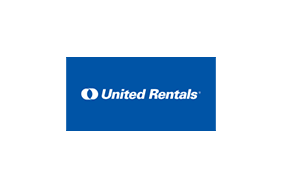How To Reduce Construction Equipment Emissions on Jobsites: A Guide
United Rentals offers a roadmap for achieving a low-emission jobsite.
Published 02-21-24
Submitted by United Rentals, Inc.

With more project owners setting sustainability goals for large construction projects, some companies are looking for ways to shrink the carbon footprint of their operations, including by curbing construction equipment emissions. Since most construction equipment currently used on jobsites runs on fossil fuel, it’s a big goal, and figuring out where to start isn’t always easy.
The United Rentals white paper Roadmap to Low-Emission and Zero-Emission Jobsites outlines a data-based strategy contractors can follow to reduce the greenhouse gas (GHG) emissions of their owned and rented equipment.
In the white paper, sustainability managers and fleet managers will find a practical, four-step approach to reducing construction equipment emissions incrementally over time without sacrificing productivity or destroying profit margins. Below is a peek at some of the topics covered.
Getting the biggest bang for your buck
Reducing emissions doesn’t require replacing an entire fleet with lower-emission or zero-emission construction equipment. To make the biggest impact while staying within budget, companies can start by identifying the equipment that produces the most emissions on their jobsites.
Tracking estimated equipment emissions reveals which equipment is generating the lion’s share of carbon emissions, and it’s possible through the Estimated Emissions dashboard in Total Control®, the United Rentals cloud-based worksite management platform.
Once the biggest GHG producers have been identified, whether it’s forklifts, telehandlers or generators, companies can focus on identifying more sustainable ways to operate and more sustainable equipment to rent or own.
Exploring power generation alternatives
Diesel generators typically provide most of the power on off-grid jobsites, but diesel is one of the least clean-burning fuels. Thanks to a new generation of portable power generation equipment, contractors now have a multitude of potential alternatives.
Depending on the application, options may include propane, natural gas and hydrogen generators, stand-alone batteries and portable solar arrays. Some of this equipment can be paired with a battery energy storage system (BESS) to further reduce GHG emissions. One hybrid power solution developed in conjunction with United Rentals provides enough power to act as self-contained, low-emission microgrid.
Embracing electric and hybrid equipment
Electric equipment is one of the cornerstones of the low-emission jobsite. As it becomes more widely available, it’s becoming more popular.
The electric construction equipment manufacturers are producing today performs on par with traditionally fueled equipment. Electric category classes now go beyond small electric units such as warehouse forklifts and scissor lifts to larger, heavier equipment categories such as mini excavators and compact telehandlers. A higher upfront expense is partially offset by lower operating costs and significantly reduced maintenance needs.
For contractors who want the power of an even larger diesel machine and the ability to operate indoors, hybrid equipment is another option.
A low-emission jobsite isn’t a pie-in-the-sky idea. Reducing construction equipment emissions is possible with equipment available today, and companies don’t have to break their budget to move the needle. The Roadmap to Low-Emission and Zero-Emission Jobsites white paper helps managers focus their efforts, and dollars, on changes that will yield the biggest results and highlights some of the cutting-edge equipment enabling this critical shift.
Download the white paper Roadmap to Low-Emission and Zero-Emission Jobsites now.

United Rentals, Inc.
United Rentals, Inc.
United Rentals, Inc. is the largest equipment rental company in the world. The company has an integrated network of 1,288 rental locations in North America, 11 in Europe, 28 in Australia and 18 in New Zealand. In North America, the company operates in 49 states and every Canadian province. The company’s approximately 20,400 employees serve construction and industrial customers, utilities, municipalities, homeowners and others. The company offers approximately 4,300 classes of equipment for rent with a total original cost of $15.79 billion. United Rentals is a member of the Standard & Poor’s 500 Index, the Barron’s 400 Index and the Russell 3000 Index® and is headquartered in Stamford, Conn. Additional information about United Rentals is available at unitedrentals.com.
More from United Rentals, Inc.

